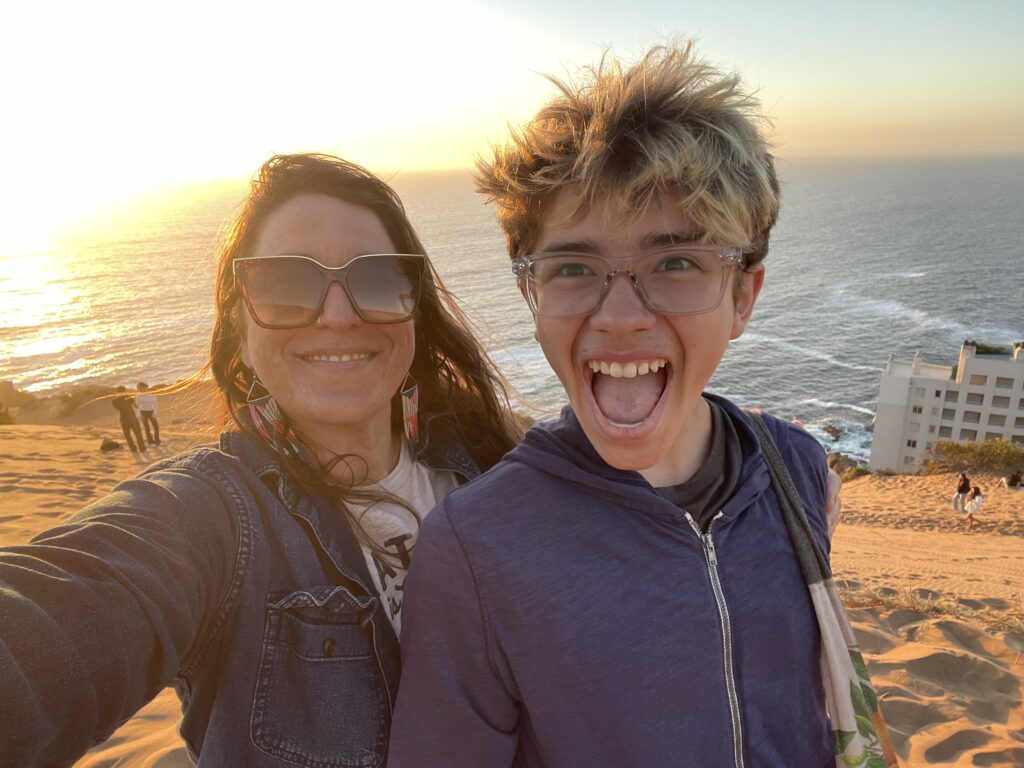
Lately I’ve been thinking about what it really means to sit with someone. Not fix them. Not cheerlead. Just be—long enough, quiet enough, curious enough to feel what’s really happening in the space between you. I had the gift of spending extra time recently with a young family member who moves through the world differently, and the slower rhythm of our days reminded me what co-regulation actually feels like. When we tuned into each other, I could feel both of our systems soften. It was like my nervous system saying, thank goodness you’re here and not trying to change me.
I notice this with my son, too—how different it feels when I’m trying to push him versus when I partner with him. His whole body tells the story. In one mode, he shuts down completely; in the other, he lights up, silly and delighted. Sometimes I don’t even notice what shifted until I’ve already lost the thread of connection. But when I do catch it, the difference is striking.
Co-regulation is one of those healing buzzwords that gets tossed around a lot, but in the somatic world, it’s not just a nice idea—it’s a biological need. Our nervous systems are wired to find safety in relationship. When someone meets us with calm, kindness, or curiosity, our body reads it as “I’m safe”—and begins to unwind. That might look like soft eye contact, a slower breath, or a more grounded voice. It’s not about fixing or performing—it’s about presence. And even when nothing gets resolved, something meaningful still happens.
In a world that feels louder and more divided than ever, this practice of co-regulation can be quietly radical. Whether you’re sitting beside someone who sees things differently or breathing alongside your garden as it grows—this is how we stay connected. Not through perfection, but through the willingness to pause, to listen, and to meet each other where we are.
I’m reminded of that old water crystal experiment, where the structure of water shifted depending on how it was spoken to. Maybe our nervous systems are like that too—shaped not just by what happens to us, but by how we’re held. When we’re met with acceptance, even in our messiness, something inside us starts to reorganize toward healing.
Practice:
So this week, I invite you to notice: Where are the small moments you can co-regulate with someone else? What does it feel like when someone offers you that kind of presence? What do you feel in their body, their voice, their way of being?
Hope you enjoy.
Much love,
Katy


